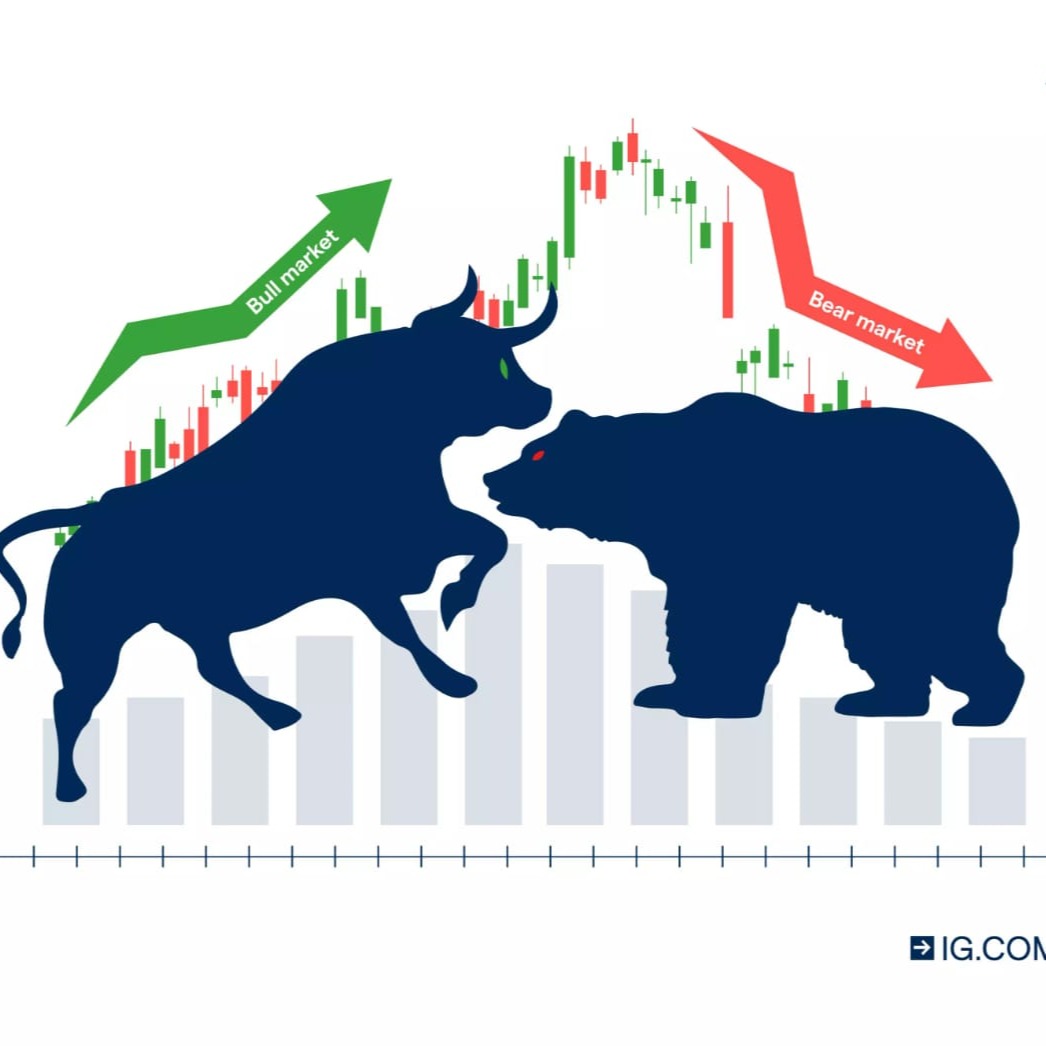
سعر DeepBook ProtocolDEEP
AED
مُدرجة
د.إ0.1374AED
%3.45-1D
سعر DeepBook Protocol (DEEP) في درهم الإمارات العربية المتحدة يصل إلى د.إ0.1374AED.
مخطط أسعار DeepBook Protocol (AED/DEEP)
آخر تحديث بتاريخ 2025-12-15 21:20:46(UTC+0)
DEEP إلى محول AED
DEEP
AED
1 DEEP = 0.1374 AED. إنّ السعر الحالي لتحويل 1 DeepBook Protocol (DEEP) إلى AED هو0.1374. يُعد هذا السعر مرجعيًا فقط.
تقدم Bitget أقل رسوم المعاملات بين جميع منصات التداول الرئيسية. كلما ارتفع مستواك المميز VIP، كلما كانت الأسعار أكثر ملاءمة.
سعر DeepBook Protocol الحالي اليوم بعملة AED
سعر DeepBook Protocol المباشر اليوم هو 0.1374د.إAED، مع قيمة سوقية حالية تبلغ 619.26Mد.إ. انخفض سعر DeepBook Protocol بنسبة 3.45% خلال الـ 24 ساعة الماضية، حجم التداول على مدار 24 ساعة هو 91.11Mد.إ. يتم تحديث معدل التحويلDEEP/AED(DeepBook ProtocolإلىAED) في الوقت الفعلي.
ما قيمة 1 DeepBook Protocol بعملة درهم الإمارات العربية المتحدة؟
اعتبارًا من الآن، يُقيّم سعر DeepBook Protocol (DEEP) بعملة درهم الإمارات العربية المتحدة بقيمة 0.1374د.إ AED. يُمكنك شراء 1 DEEP مقابل 0.1374د.إالآن، يُمكنك شراء 72.76 DEEP مقابل د.إ10 الآن. خلال الـ 24 ساعة الماضية، كان أعلى سعر لتحويل DEEP إلى AED هو د.إ0.1509 AED، وأقل سعر DEEP إلى AED هو د.إ0.1357 AED.
هل تعتقد أنّ سعر DeepBook Protocol سيرتفع أو ينخفض اليوم؟
مجموع الأصوات:
صعود
0
هبوط
0
تُحدّث بيانات التصويت كل 24 ساعة. فهي تعكس توقعات المجتمع بشأن توجه سعر DeepBook Protocol ولا يجب اعتبارها نصيحة استثمارية.
معلومات عن سوق DeepBook Protocol
أداء السعر (24 ساعة)
24 ساعة
الانخفاض في 24 ساعة د.إ0.14الارتفاع في 24 ساعة د.إ0.15
أعلى سعر على الإطلاق (ATH):
د.إ1.26
تغيير السعر (على مدار 24 ساعة):
-3.45%
تغيير السعر (7 أيام):
-10.59%
تغيير السعر (عام واحد):
-64.42%
تصنيف السوق:
#169
القيمة السوقية:
د.إ619,259,242.35
القيمة السوقية المخفضة بالكامل:
د.إ619,259,242.35
الحجم (24 ساعة):
د.إ91,112,702.28
حجم التوفر المتداول:
4.51B DEEP
Max supply:
--
تقرير تحليل الذكاء الاصطناعي حول DeepBook Protocol
أبرز أحداث سوق العملات المشفرة اليومعرض التقرير
سجل أسعار DeepBook Protocol (AED)
سعر DeepBook Protocol بلغ %64.42- خلال العام الماضي. كان أعلى سعر لعملة DEEP بعملة AED في العام الماضي د.إ1.26 وأدنى سعر لـ DEEP بعملة AED في العام الماضي د.إ0.1258.
الوقتالسعر/التغيير أقل سعر
أقل سعر أعلى سعر
أعلى سعر 
 أقل سعر
أقل سعر أعلى سعر
أعلى سعر 
24h%3.45-د.إ0.1357د.إ0.1509
7d%10.59-د.إ0.1357د.إ0.1621
30d%35.94-د.إ0.1258د.إ0.2175
90d%72.69-د.إ0.1258د.إ0.5587
1y%64.42-د.إ0.1258د.إ1.26
طوال الوقت%40.70-د.إ0.03948(2024-10-14, منذ 1 سنة (سنوات))د.إ1.26(2025-01-19, منذ 331 يوم (أيام))
ما هو أعلى سعر لعملة DeepBook Protocol؟
تم تسجيل أعلى مستوى على الإطلاق لسعر عملة DEEP في AED حيث بلغ 1.26د.إ، وسُجل في 2025-01-19. بالمقارنة مع أعلى مستوى على الإطلاق لعملة DeepBook Protocol حيث انخفض سعر DeepBook Protocol الحالي بنسبة 89.11%.
ما أعلى سعر لعملة DeepBook Protocol؟
تم تسجيل أدنى مستوى على الإطلاق لسعر عملة DEEP في AED حيث بلغ 0.03948د.إ، وسُجل في 2024-10-14. بالمقارنة مع أقل مستوى على الإطلاق لعملة DeepBook Protocol حيث ارتفع سعر DeepBook Protocol الحالي بنسبة 248.12%.
توقعات سعر DeepBook Protocol
متى يكون الوقت المناسب لشراء DEEP؟ هل يجب أن أشتري أو أبيع DEEP الآن؟
عند اتخاذ قرار شراء أو بيع DEEP، يجب عليك أولاً التفكير في استراتيجية التداول الخاصة بك. سيكون نشاط التداول للمتداولين على المدى الطويل والمتداولين على المدى القصير مختلفًا أيضًا. وقد يوفر لك تحليل Bitget الفني لعملة DEEP مرجعًا للتداول.
وفقًا لـ تحليل فني لمدة 4 ساعات لعملة DEEP، فإن إشارة التداول هي بيع.
وفقًا لـ تحليل فني لمدة يوم لعملة DEEP، فإن إشارة التداول هي بيع قوي.
وفقًا لـ تحليل فني لمدة أسبوع لعملة DEEP، فإن إشارة التداول هي بيع.
ماذا سيكون سعر DEEP في 2026؟
في 2026، بناءً على توقعات معدّل النمو السنوي بنسبة +5%، من المتوقع أن يصل سعر DeepBook Protocol(DEEP) إلى د.إ0.1543؛ وعلى أساس السعر المتوقع لهذا العام، سيصل عائد الاستثمار التراكمي على استثمار DeepBook Protocol والاحتفاظ بها حتى نهاية 2026 إلى +5%. لمزيدٍ من التفاصيل، يُرجى الاطلاع على DeepBook Protocol توقعات أسعار لعملتي 2025 و2026، لعام 2030-2050.كم سيكون سعر DEEP في عام 2030؟
في 2030، بناءً على توقعات معدّل النمو السنوي بنسبة 5% من المتوقع أن يصل سعر DeepBook Protocol(DEEP) إلى د.إ0.1876؛ وعلى أساس السعر المتوقع لهذا العام، سيصل عائد الاستثمار التراكمي على استثمار DeepBook Protocol والاحتفاظ بها حتى نهاية 2030 إلى 27.63%. لمزيدٍ من التفاصيل، يُرجى الاطلاع على DeepBook Protocol توقعات أسعار لعملتي 2025 و2026، لعام 2030-2050.
العروض الترويجية الرائجة
أسعار DeepBook Protocol العالمية
كم تبلغ قيمة DeepBook Protocolالآن بعملات أخرى؟ آخر تحديث: 2025-12-15 21:20:46(UTC+0)
DEEP إلى ARS
Argentine Peso
ARS$53.82DEEP إلى CNYChinese Yuan
¥0.26DEEP إلى RUBRussian Ruble
₽2.97DEEP إلى USDUnited States Dollar
$0.04DEEP إلى EUREuro
€0.03DEEP إلى CADCanadian Dollar
C$0.05DEEP إلى PKRPakistani Rupee
₨10.48DEEP إلى SARSaudi Riyal
ر.س0.14DEEP إلى INRIndian Rupee
₹3.4DEEP إلى JPYJapanese Yen
¥5.81DEEP إلى GBPBritish Pound Sterling
£0.03DEEP إلى BRLBrazilian Real
R$0.2كيفية شراء DeepBook Protocol(DEEP)

أنشئ حسابًا مجانيًا على Bitget
سجّل اشتراكك في Bitget باستخدام عنوان بريدك الإلكتروني/رقم جوّالك وإنشاء كلمة مرور قوية لتأمين حسابك.

تحقق من حسابك
تحقق من هويتك عن طريق إدخال معلوماتك الشخصية وتحميل بطاقة هوية صالحة بها صورتك.

تحويل DEEP إلى AED
اختر من بين العملات المشفرة للتداول على Bitget.
الأسئلة الشائعة
ما هو السعر الحالي لعملة DeepBook Protocol؟
يمكن التحقق من السعر الحالي لعملة DeepBook Protocol على منصة Bitget أو منصات العملات المشفرة الموثوقة الأخرى.
ما هي العوامل التي تؤثر على سعر بروتوكول DeepBook؟
تشمل العوامل التي تؤثر على سعر بروتوكول DeepBook الطلب في السوق، وديناميكيات العرض، والاتجاهات العامة للسوق، والتطورات داخل نظام بروتوكول DeepBook.
هل سيرتفع سعر بروتوكول DeepBook في المستقبل؟
على الرغم من أنه من الصعب التنبؤ بحركة الأسعار المستقبلية، إلا أن المستثمرين غالبًا ما يحللون الاتجاهات السوقية وتطورات المشاريع داخل بروتوكول DeepBook لتقديم توقعات مستنيرة.
أين يمكنني شراء بروتوكول DeepBook بأفضل سعر؟
يمكنك شراء بروتوكول DeepBook بأسعار تنافسية في بورصة Bitget، حيث يمكنك الاستفادة من خيارات تداول متنوعة.
هل بروتوكول DeepBook استثمار جيد؟
تعتمد جدوى بروتوكول DeepBook كاستثمار على البحث الفردي وظروف السوق. دائمًا اعتبر مستوى تحمل المخاطر الخاص بك قبل الاستثمار.
كيف يقارن سعر بروتوكول DeepBook بأعلى سعر له على الإطلاق؟
يمكن مقارنة سعر بروتوكول DeepBook بأعلى سعر له على الإطلاق من خلال التحقق من بيانات الأسعار التاريخية على Bitget Exchange أو منصات تحليل العملات المشفرة المختلفة.
ما هي توقعات الأسعار لبروتوكول DeepBook في السنة القادمة؟
تختلف توقعات الأسعار لبروتوكول DeepBook بشكل كبير وتعتمد على ظروف السوق المختلفة والتحليلات. يُنصح بالبقاء على اطلاع بما يحدث في السوق وتحليلات الخبراء.
كيف يمكنني تتبع اتجاهات أسعار بروتوكول DeepBook؟
يمكن تتبع اتجاهات أسعار بروتوكول DeepBook باستخدام أدوات تحليل السوق ومباشرة على منصات مثل Bitget Exchange.
هل هناك أي أحداث قادمة قد تؤثر على سعر بروتوكول ديب بوك؟
يمكن أن تؤثر الأحداث القادمة، مثل التحديثات التكنولوجية أو إعلانات الشراكة، على سعر بروتوكول ديب بوك. تابع الأخبار من القنوات الرسمية.
ما هي القيمة السوقية لبروتوكول DeepBook وكيف تؤثر على سعره؟
تنعكس القيمة السوقية لبروتوكول DeepBook على قيمته السوقية الإجمالية، مما قد يؤثر على ادراك المستثمر وسلوك الأسعار. يمكنك العثور على معلومات حول القيمة السوقية الحالية في بورصة Bitget.
ما السعر الحالي لـ DeepBook Protocol؟
السعر المباشر لعملة DeepBook Protocol هو د.إ0.14 لكل (DEEP/AED) مع حد سوقي حالي قدره د.إ619,259,242.35 AED. تشهد قيمة عملة DeepBook Protocol لتقلبات متكررة بسبب النشاط المستمر على مدار الساعة طوال أيام الأسبوع (24/7) في سوق العملات المشفرة. تُتاح بيانات السعر الحالي في الوقت الفعلي لعملة DeepBook Protocol وبياناته السابقة على Bitget.
ما حجم تداول DeepBook Protocol على مدار 24 ساعة؟
خلال الـ 24 ساعة الماضية، حجم تداول DeepBook Protocol بلغ 91.11Mد.إ.
ما أعلى مستوى على الإطلاق لـ DeepBook Protocol؟
أعلى مستوى على الإطلاق لـ DeepBook Protocol هو 1.26د.إ. هذا أعلى سعر على الإطلاق لـ DeepBook Protocol منذ الإصدار.
هل يمكنني شراء DeepBook Protocol على منصة Bitget؟
نعم، يتوفر DeepBook Protocol حاليًا على منصة Bitget المركزية. للحصول على إرشادات أكثر تفصيلاً، راجع دليل كيفية شراء deepbook-protocol الخاص بنا المفيد.
هل يمكنني تحقيق دخل ثابت من الاستثمار في DeepBook Protocol؟
بالطبع، توفر Bitget منصة تداول استراتيجية، مع برامج تداول آلية ذكية لتشغيل عمليات التداول آليًا وتحقيق الأرباح.
أين يمكنني شراء DeepBook Protocol بأقل رسوم؟
يسعدنا أن نعلن أن منصة تداول استراتيجية متاح الآن في منصة تداول Bitget. تقدم Bitget واحدة من أفضل رسوم التداول في المجال وتفاصيل لضمان استثمارات مربحة للمتداولين.
أسعار العملات المشفرة ذات الصلة
سعر XRP (AED)سعر Stellar (AED)سعر Solana (AED)سعر WINkLink (AED)سعر Litecoin (AED)سعر Bitcoin (AED)سعر Fartcoin (AED)سعر Pi (AED)سعر Toncoin (AED)سعر Bonk (AED)سعر Cardano (AED)سعر Pepe (AED)سعر Dogecoin (AED)سعر Shiba Inu (AED)سعر Terra (AED)سعر Smooth Love Potion (AED)سعر Kaspa (AED)سعر dogwifhat (AED)سعر Worldcoin (AED)سعر Ethereum (AED)
أين يمكنني شراء DeepBook Protocol (DEEP)؟
قسم الفيديو - التحقق السريع والتداول السريع!

كيفية إكمال التحقق من الهوّية على Bitget وحماية نفسك من عمليات الاحتيال
1. يُرجى تسجيل الدخول إلى حسابك في Bitget.
2. إذا كنت مستخدمًا جديدًا لمنصة Bitget، شاهد الشرح التفصيلي الخاص بنا حول كيفية إنشاء حساب.
3. مرر مؤشر الماوس فوق رمز الملف الشخصي الخاص بك، وانقر على «لم يتم التحقق منه»، واضغط على «تحقق».
4. اختر بلد الإصدار أو المنطقة ونوع الهوّية، واتبع التعليمات.
5. حدد «التحقق عبر الجوّال» أو «الكمبيوتر الشخصي» بناءً على تفضيلاتك.
6. أدخل بياناتك وأرسل نسخة من هويتك، والتقط صورة ذاتية.
7. أرسل طلبك، وبهذا تكون قد أكملت التحقق من الهوية!
اشترِ DeepBook Protocol مقابل 1 AED
هدية ترحيبية بقيمة span style='color: #08FFFF' >6200 USDT لمستخدمي Bitget الجُدد!
اشتر DeepBook Protocol الآن
استثمارات العملات المشفرة، بما في ذلك شراء DeepBook Protocol عبر الإنترنت عبر منصة Bitget، عرضة لمخاطر السوق. توفر لك منصة Bitget طرقًا سهلة ومريحة لشراء DeepBook Protocol، ونبذل قصارى جهدنا لإبلاغ مستخدمينا بشكل كامل بكل عملة مشفرة نقدمها على منصة التداول. ومع ذلك، فإننا لا نتحمل أي مسؤولية للنتائج التي قد تنشأ عن عملية شراء DeepBook Protocol. لا تُعد هذه الصفحة وأي معلومات متضمنة تحيزًا لأي عملة مشفرة معينة.
DEEP إلى محول AED
DEEP
AED
1 DEEP = 0.1374 AED. إنّ السعر الحالي لتحويل 1 DeepBook Protocol (DEEP) إلى AED هو0.1374. يُعد هذا السعر مرجعيًا فقط.
تقدم Bitget أقل رسوم المعاملات بين جميع منصات التداول الرئيسية. كلما ارتفع مستواك المميز VIP، كلما كانت الأسعار أكثر ملاءمة.
مصادر DEEP
DeepBook Protocol من التقييمات
4.4
العلامات:
العقود:
0xdeeb...p::DEEP(Sui Network)
رؤى Bitget

BGUSER-SNXYLE69
2025/10/02 04:50
friends
$DEEP its my opinion 1$ and 10$ 😜 so what's ur opinion ? comment now 0.12
DEEP%3.59-

ScalpingX
2025/09/29 08:33
$DEEP - Mcap 426,44M$ - 88%/ 43,4K votes Bullish
SC02 M5 - pending Long order. Entry is within HVN + not affected by any weak zone, estimated stop-loss around 1.47%. The uptrend is in the 199th cycle, advance amplitude 11.85%.
#TradingSetup #CryptoInsights
DEEP%3.59-

Jahanzaib_Gondal
2025/09/18 04:25
$ZKC: Game Time. Analyzing the New $ZKC Power on Bitget.
Subtitle: The buzzer beater has sounded. $ZKC the native token for the elite zkSync ecosystem, is now live for trading on Bitget. We break down the pre-game analysis and the potential plays ahead.
Let's get straight to the scouting report.
The Player: Who is $ZKC?
$ZKC isn't just another name on the roster. It's the utility token for zkSync Era, a top-tier Layer-2 blockchain using advanced zero-knowledge (ZK) proofs to scale Ethereum. Think of it as the fuel and the franchise player for a faster, cheaper Ethereum experience.
· Position: Utility Token / Ecosystem Driver
· Key Stats: Powers network security, pays gas fees via account abstraction, and governs the future of the zkSync protocol.
· Draft Position: Highly touted prospect with a strong technical foundation.
The Market: First Quarter Analysis
The opening minutes of a new listing are all about volatility and momentum. $ZKC is hitting the court with a few key advantages:
· Strong Bench (Ecosystem): zkSync isn't a rookie. It has a deep bench of DeFi apps, NFTs, and users already playing on its network. This isn't a build-from-scratch project.
· Crowd Hype (Demand): Launching on a major exchange like Bitget provides instant liquidity and access to a global audience of traders. Expect a high-volume opening.
· The Game Plan (Tokenomics): The token is designed to be used, not just held. Real utility creates real demand.
Key Resistance Level (The Defense to Break): $0.95 - $1.05 This is the first major test.A strong breakout above this zone on high volume could signal a run-up.
Key Support Level (The Home-Court Advantage): $0.65 - $0.75 This is the floor.Holding this level is critical for maintaining bullish momentum. A break below could see a retreat to find stronger support.
The Playbook: Price Prediction Scenarios
This is not financial advice. This is a game plan based on market mechanics.
· Bull Case (The Championship Run): If Bitcoin holds strong and the altcoin market rallies, $ZKC's unique narrative could make it a standout performer.
Short-term target: $1.50 - $2.00. This would require sustained buying pressure and overall market greed.
· Base Case (A Solid Season): The most likely scenario is consolidation after the initial listing frenzy. Price action chops between $0.80 and $1.20 as the market digests the initial supply and demand. This is healthy for long-term growth.
· Bear Case (An Off Night): If the broader crypto market sells off, all new listings are vulnerable. A break below key support could see a test of $0.50 or lower. This is a risk every trader must account for.
Final Buzzer: How to Play It
1. Watch the Volume: High volume on green candles = strong buying interest. Low volume on pumps = a potential fakeout.
2. Track BTC: If Bitcoin tanks, it's hard for any altcoin, especially a new one, to rally. Know the macro climate.
3. Manage Your Risk: This is a new, volatile asset. Size your position accordingly. Don't go all-in on the first play.
$ZKC is now live. The game is on.
BTC%2.64-
FUEL%0.91-

YASIRALICTRADER🌟
2025/09/18 03:13
📊🔥 BTC Exchange Reserves Drop to Multi-Year Lows: What It Means for Price Action
The Bitcoin market has just hit a critical milestone: exchange reserves are now at multi-year lows. This development is more than just a data point—it’s a powerful signal of shifting market dynamics, investor sentiment, and long-term price potential. For traders, institutions, and retail holders alike, this trend could reshape how Bitcoin behaves in the months ahead. Let’s dive deep into what this means. 🚀
---
✨ 📉 BTC Exchange Reserves Explained
What are Exchange Reserves?
Exchange reserves represent the total amount of Bitcoin held in wallets controlled by centralized exchanges.
Why it Matters?
When reserves drop, it typically means fewer coins are available for immediate selling, suggesting that investors are moving their BTC to cold storage for long-term holding.
---
🚀 🐂 Supply Shock in the Making?
With fewer coins on exchanges, liquidity shrinks.
A shrinking supply often leads to a supply-demand imbalance, which can trigger sharp upward movements in price when demand increases.
This pattern has historically aligned with bullish rallies, particularly when reserves hit extreme lows.
---
📊 On-Chain Data Insights
Multi-year lows in reserves reflect a trend similar to pre-bull market phases in previous cycles.
Large holders (whales) are accumulating and moving BTC to cold wallets.
Institutional-grade custodianship is on the rise, indicating growing long-term confidence.
---
⚡ Key Investor Takeaways
📉 Less BTC available to sell → Lower selling pressure.
📈 Higher probability of price appreciation as demand meets reduced supply.
🐋 Whale accumulation signals smart money positioning for the next leg up.
---
🌍 Broader Market Implications
A decline in reserves could reduce volatility in the short term, as panic selling becomes harder with fewer coins on exchanges.
Long-term, it may amplify bullish momentum if mainstream demand surges—especially with ETFs and institutional inflows accelerating.
This aligns perfectly with the “digital gold” narrative as more investors treat Bitcoin as a long-term store of value rather than a trading asset.
---
🔮 Outlook: What’s Next for BTC?
If exchange reserves continue falling, expect higher resistance to downside pressure.
Potential catalysts like ETF inflows, Fed policy shifts, and global liquidity trends could magnify the impact of low reserves.
The stage may be set for another historic BTC rally, with scarcity as the fuel and institutional adoption as the spark.
---
✅ Final Thoughts
The drop in BTC exchange reserves is not just a technical metric—it’s a macro signal. Investors are pulling Bitcoin off exchanges because they believe in its long-term potential. As reserves decline, the supply squeeze narrative strengthens, setting Bitcoin up for possible explosive price movements in the near future.
👉 In short: Low reserves = strong hands = bullish signal. 🐂🔥
---
BTC%2.64-
FUEL%0.91-

BGUSER-VSKY448K
2025/09/18 01:41
$SPON another deep dumpbin
DEEP%3.59-
تداول
Earn
DEEP متاح للتداول على منصة تداول Bitget، ويمكن ضمانه على محفظة Bitget. منصة تداول Bitget هي أيضًا واحدة من أولى منصات التداول المركزي التي تدعم صفقات DEEP.
يمكنك التداول DEEP على Bitget.DEEP/USDT
التداول الفوريDEEP/USDT
العقود الآجلة لعملة USDT-Mأسعار العملات المُدرجة حديثًا على Bitget
صافي التدفقات إلى صناديق ETF الفورية للبيتكوين في الولايات المتحدة هذا الأسبوع بلغ 250 مليون دولاراستراتيجي JPMorgan: النمو الاقتصادي الأمريكي يتباطأ تدريجياً، ولا نعتقد أن خفض أسعار الفائدة من قبل الاحتياطي الفيدرالي سيحفز النمو الاقتصاديXTTA تسجل أعلى مستوى تاريخي، حيث وصلت اليوم إلى 0.475 دولار أمريكي، مع أعلى نسبة ارتفاع بلغت 37%نظرة على الأسبوع المقبل: بيانات PPI و CPI الأمريكية لشهر أغسطس قادمة، هل أصبح خفض الفائدة أمراً محسوماً؟قامت Galaxy Digital برهن 387,000 من HYPE بقيمة تقارب 18.2 مليون دولار أمريكيقام عنوان المساهم الرئيسي في Hyperlabs بإلغاء تفويض 25.4 مليون HYPE من عقدة المؤسسة وأعاد توزيعها.مؤسس RMRK: عائلة ترامب هي "المافيا" في العصر الجديدأول ورقة مالية مدعومة بأصول القروض تستخدم تقنية البلوكشين من شركات التمويل الاستهلاكي الوطنية تم إطلاقهاBlockDAG يحول التنفيذ الهادئ إلى قوة مالية بقيمة 400 مليون دولار؛ آخر التوقعات حول سعر Uniswap و Toncoin (TON)XRP في عصر ما بعد SEC: هل من الممكن أن يعود السعر إلى أكثر من 1 دولار؟








